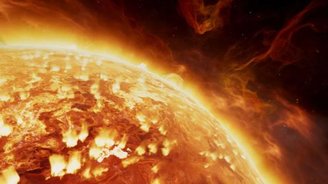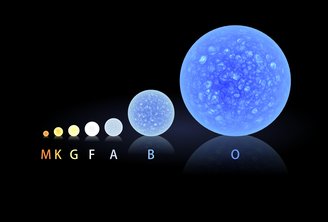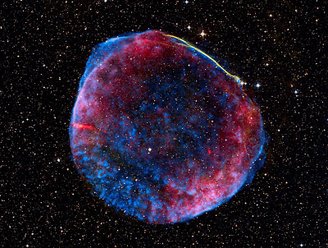Imagine a time when the universe was vast darkness, a primordial void where stars did not shine and atoms did not exist. But after a cataclysmic event – the Big Bang – All the particles were born that would eventually form everything we know: galaxies, stars, planets, and even us..
The chemical elements that make up our bodies and the world around us did not appear immediately: they were formed deep within stars, created by violent processes, and dispersed throughout the cosmos in a continuous cycle over billions of years.
The journey to the origin of chemical elements is a fascinating chapter in the history of the Universe from the first seconds of the universe to the physical processes that still occur today.. Let’s find out how.
The first stage of the creation of elements began with the Big Bang approximately 13.8 billion years ago. In the first moments after this initial explosion, the Universe was a dense soup of subatomic particles such as quarks, gluons, leptons, and photons.
As the universe expanded and cooled, quarks began to come together to form the first protons and neutrons. About three minutes after the Big Bang, these protons and neutrons combined to form the first atomic nucleus. in a process known as primordial nucleosynthesis.
The result of this first stage was the creation of the lightest elements: mainly hydrogen and helium with a small amount of lithium. Shortly after the Big Bang, approximately 75% of the matter in the Universe was hydrogen and 25% was helium.
However, these nuclei did not form complete atoms until about 380,000 years after the Big Bang. Because the Universe remained hot and ionized until that moment, electrons were prevented from connecting to the nucleus..
Only after this cooling phase did the formation of the first neutral atoms finally occur and the Universe became transparent, allowing photons of light to travel freely.

Although the Big Bang created hydrogen and helium, these light elements do not explain the enormous diversity of heavy elements we find on Earth and in the rest of the Universe today. The real factory of more complex elements began in stars, the huge nuclear reactors of the cosmos.
The formation of the first stars and galaxies occurred during the first 400 million years of the universe as a result of the collapse of large condensing clouds of matter. through gravity until it produces the energy necessary to “light up” a star..
In the interior of the star, the temperature and pressure are high enough to fuse hydrogen nuclei into helium through the process of nuclear fusion. This process releases enormous amounts of energy, keeping the star going for billions of years and providing the heat and light we see.

However, as stars develop, the helium that accumulates in the core begins to transform into heavier elements such as carbon and oxygen in a process called stellar nucleosynthesis. The most massive stars can form heavier elements such as silicon and iron in their final stages..
But iron marks a limit: Fusing elements other than iron no longer release energy; instead it consumes energy. This means that when massive stars exhaust their nuclear fuel, they will collapse under their own gravity, causing a massive explosion known as a supernova.

Supernovae are some of the most violent and energetic events in the Universe: When a massive star explodes as a supernova, temperatures reach billions of degrees, allowing heavier elements such as gold, uranium and lead to form. These elements are thrown into space in huge shock waves and spread over large regions of the universe.
These enriched stellar remnants mix with interstellar gas and dust and become part of molecular clouds that will give rise to new stars, planets, and eventually life.
Our Solar System is also the result of this cyclical process: The atoms that make up the Earth and even our bodies are composed of elements created in previous generations of stars and emitted by supernovae.
Everything we know, from the oxygen we breathe to the calcium in our bones, was shaped by cosmic processes that took place billions of years before we existed. Carl Sagan poetically summarized this cosmic connection in his timeless words: “We are made of stardust.”
Source: Tec Mundo
I’m Blaine Morgan, an experienced journalist and writer with over 8 years of experience in the tech industry. My expertise lies in writing about technology news and trends, covering everything from cutting-edge gadgets to emerging software developments. I’ve written for several leading publications including Gadget Onus where I am an author.












